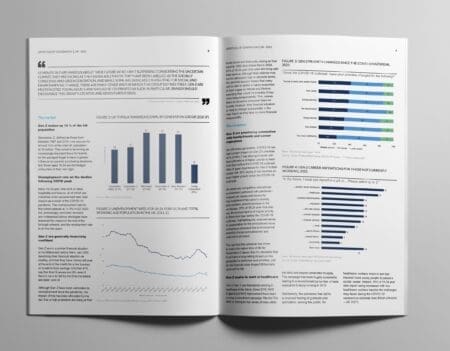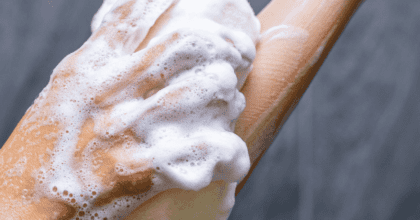Real men mop: Younger US men say they spend more time cleaning than any other demographic
Cleaning is an undeniable constant in the lives of most Americans, an important and time-consuming task for all. However, new research from Mintel reveals that men may be doing more than their fair share as those age 18-34 report spending just over six hours (364 minutes) on average personally cleaning their home in one week – much more than women in the same age group (4.8 hours or 287 minutes) and well above the overall consumer average of 4.6 hours (276 minutes).
Nearly all (98 percent) Americans state that they have some level of responsibility for cleaning their homes, with three in five (61 percent) claiming to have sole responsibility. While cleaning is a universal chore for consumers of all types, moms, middle aged women and younger men appear to bear the grunt of the work: 79 percent of moms with kids under age 18 in the house, 71 percent of women age 35-54 and 68 percent of men age 18-34 take sole responsibility for housecleaning.
70% of young men find housekeeping enjoyable compared to 43% of consumers overall
While moms are typically the core audience for cleaning products, it’s clear that young men are a highly engaged and underserved audience. In addition to spending more time cleaning than virtually any other group, young men are also significantly more likely than the norm to have positive feelings about clean homes (94 percent men 18-34 vs 90 percent overall) and to find housekeeping enjoyable (70 percent men 18-34 vs 43 percent overall).
However, Mintel research indicates that young US men have the least clear standards of what they consider “clean.” While the majority of Americans believe that “things looking tidy” (55 percent) and “no visible dirt or dust” (51 percent) are top indicators that they’ve cleaned enough*, young men are much less likely to agree (41 percent and 34 percent respectively). Time appears to be a big factor for younger men, as they are more likely than consumers overall to state that they are done cleaning when they are tired of doing so (15 percent men 18-34 vs 9 percent overall**) or have run out of time (10 percent men 18-34 vs 6 percent overall**).
“While parents, and mothers in particular, remain the priority for household cleaning brands, our research shows that younger men are also highly engaged and assume quite a bit of responsibility for maintaining a clean home. This trend may be due to both younger men being inefficient cleaners, as well as fathers with young children at home doing more to pitch in,” said Stephen Brown, Household Care Analyst at Mintel. “Young men may also be overestimating the amount of time spent and responsibility for cleaning, resulting in more aspirational than actual figures. Regardless, it is clear that younger men are an important emerging market for cleaning products and supplies. While families remain an important focus, single men are an underserved segment that could benefit from products geared directly to them.”
Mintel research reveals that US households are getting smaller, with trends in both shrinking apartment square footage and reduced number of people living in single family homes. In the past 10 years the average household size has decreased from 2.57 occupants in 2006 to 2.54 in 2016, while one- and two-person households have increased at above-average rates (one person households increased 14.5 percent 2006-16 and two people households grew 10.9 percent 2006-16)***. Going forward, Mintel predicts that the number of one- and two-person households will grow significantly as young people delay marriage and having kids and the number of empty nesters and seniors climbs. What’s more, apartments are shrinking with a 6.1 percent decrease in the size of US multiunit dwellings 2005-14***, as urban dwellers embrace more compact living.
“Traditional notions of the American family have evolved in recent years as more young adults delay marriage and starting families, while Generation X and Baby Boomers are becoming empty nesters. This has resulted in a decline in household size, creating potential risk for cleaning brands as single householders are the most likely to stick to basic spot cleaning. Cleaning product companies need to adapt to a new, more diverse reality with segmented approaches that engage both space-strapped urban couples and single homeowners and appeal to their unique needs for time-saving products and smaller package sizes,” continued Brown.
65% of Americans agree that they’d spend more for cleaning products that save time
It’s clear that among Americans who clean, most aspire to have regularly tidy homes, with an overwhelming 90 percent agreeing that clean homes leave a positive impression, while more than four in five (86 percent) consumers overall agree that cleaning gives them a sense of accomplishment. However, feeling pressured for time is the standard in today’s fast-paced, multitasking society, and it’s no surprise that time pressure is a factor in cleaning: three in five consumers agree that they’d keep their homes cleaner if they had more time (60 percent), and that convenience is more important than perfection (58 percent). It is thus not surprising that a comparatively high 65 percent of Americans agree that they’d spend more for products that save time.
As a result, wipes are currently the fastest-growing surface cleaning product category, increasing 17.5 percent since 2013 to hit $791 million in 2015. This category fits well with consumers’ need for products that are fast and easy to use. While consumers agree that it is important to use environmentally-friendly cleaning products (66 percent), with three in 10 (30 percent) saying that they try to use reusable wipes/cloths, it is clear that wipes and paper towels are here to stay. In 2015, paper towel sales totaled a robust $5.4 billion, 1.7 percent higher than 2013.
“Time is undoubtedly a factor for most Americans, and our research reflects a desire for more time spent on household cleaning; and yet, consumers say that they are spending more rather than less time on tidying up. Accordingly, solutions that can promise efficiency and timesaving are critical. The need for speed is undoubtedly behind the success of the wipes segment, which is currently the fastest-growing surface cleaning product category. They offer one-step convenience and are well suited to spot cleaning which is the most common model for consumers today,” concluded Brown.
*Specific to living/family rooms; Mintel also surveyed “what it means to be clean” in the kitchen, bathroom and bedroom
**Specific to bathrooms; Mintel also surveyed “what it means to be clean” in the kitchen, bedroom and living/family room
***Research according to US Census/Mintel
Press copies of the Cleaning the House US 2016 report and interviews with Stephen Brown, Household Care Analyst, are available on request from the press office.
For the latest in consumer and industry news, top trends and market perspectives, stay tuned to Mintel News featuring commentary from Mintel’s team of global category analysts.
-
Mintel StoreGet smart fast with our exclusive market research reports, delivering the latest data, innovation, trends and strategic recommendations....View reports
-
Mintel LeapMintel Leap is a revolutionary new AI-powered platform that will transform your research process....Book a demo
































